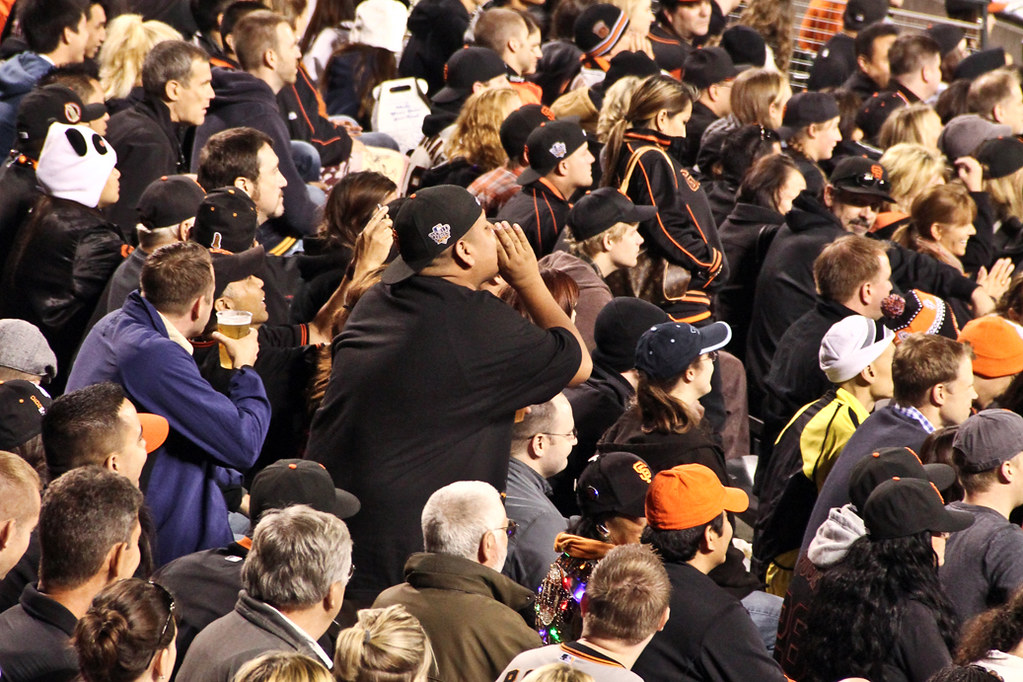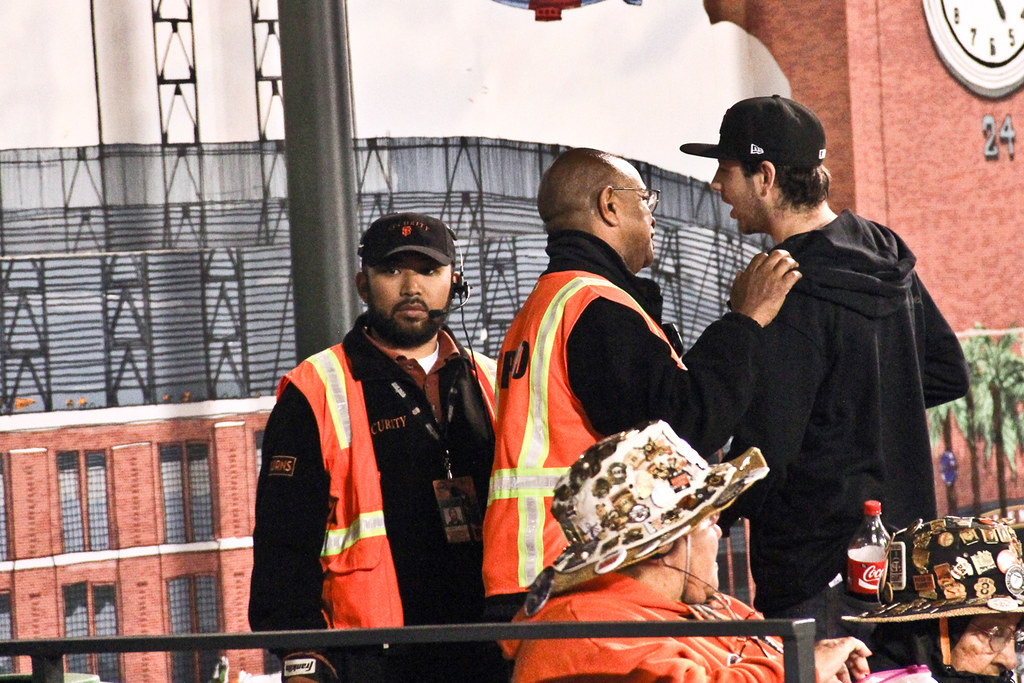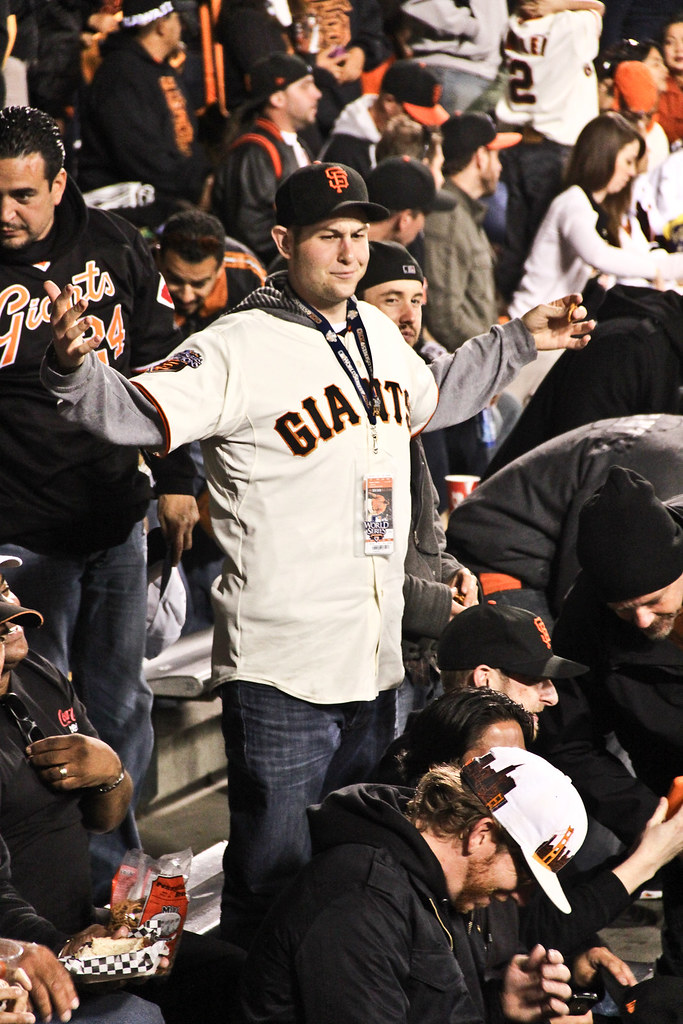[flickrgallery setid=”72157628037218498″ limit=”10″]

Unfortunately for some, attending a game isn’t enough these days. The wonderful experience of watching competition at the highest level is now tarnished with binge drinkers who look for any opportunity to wreak a little havoc.
“You have to go to a game drunk,” claims Morad Lesov, 23, who was involved in an altercation after a San Francisco Giants game. “Sitting there for three hours is no fun; when you and everyone you’re with is drunk though, that’s when you have the best time.”
While it is true that alcohol can indeed enhance an already exciting event, it is when consumption exceeds the limitations of a person that the true colors of alcohol are shown.
“We had just left the Giants game and were on our way to the train station,” says Richie Cortese, 21, who had attended the game with Lesov. “We’d definitely had a few; we like to pregame. Some other drunk guys got in our faces and we went ballistic.”
In today’s society, the intake of alcohol has become nonchalant to the point that it is normal to see someone stumbling his or her way through the ballpark. The guy throwing up in the corner? Happens all the time. The guy leaving the ballpark with a buzz? Hope you get home safe buddy!
In San Francisco, drinking before ballgames has not just become customary, but remarkably easy as well. Tailgating is a tradition that has stood the test of time, friends and families gather together to eat and drink before a game. The problem? People have begun to phase out the eating part and tailgating now means sitting in a parking lot drinking for two hours before going into the stadium. For some, drinking before the actual game holds more appeal then actually going into the stadium and watching the event one paid for.
“I usually don’t get into the game until the third or fourth inning,” said Greg Manson, 21. “Even when I’m in the stadium I don’t really watch. Don’t get me wrong, I love the Giants, that’s my team. But I can watch the game from home. When I’m at the stadium I want to get loose and have a great time. For me, having a great time usually involves killing twelve beers.”
It’s easy to rationalize this mentality; the stereotypical college kid moniker. College kids are usually thought of as heavy drinkers. Countless films have been made about the legendary drinking exploits at college parties. Likewise, sporting events are also synonymous with drinking; spotting a fat guy drinking a beer in a sports movie is about as easy as hitting a fastball thrown by Barry Zito. It is only logical then that when you put college students at a sporting event the result is binge drinking at its finest. And when you factor in the immaturity of college students with the ill-effects of alcohol, reckless results are bound to follow.
In most cases, when fights or arguments break out at a game, they are usually between fans of rival teams. It doesn’t take alcohol to spark these confrontations; true fans live and die for their teams and see it as their honor to defend their team against anyone. Though this is still no excuse for fighting, the rationale behind it makes sense. It is when fans of the same team fight each that’s puzzling. When under the effects of alcohol, however, things don’t always turn out as you would expect.
Following a recent San Francisco Giants triumph over the lowly division rival San Diego Padres, Lesov and his companions were celebrating the victory in the only way they knew how: more drinks. On their way to the train station from the bar, they ran into two fellow binge drinkers who were looking for trouble.

“We were just walking to the train, messing around a little bit, pushing each other and laughing,” said Lesov. “I accidentally bumped into some guy and he went crazy. He got in my face, started yelling and cursing at me, and then I went off on him too.”
Luckily for both parties involved, no actual fights broke out due to the presence of some sober fans who actually went to the game with the intention of watching.
“We were about to throw down, no joke,” said Lesov. “Some guys got in between us though and kept asking why we were trying to fight each other since we were all Giants fans. I didn’t care. I was so drunk and mad by then I was just trying to take it out on him.”The dangers of alcohol are well documented and wide-ranging. It doesn’t take a car to hurt, or even kill someone. Alcohol pushes extremes to new levels, where a small argument morphs into an in-your-face confrontation and a silly shoving match escalates to full-fledged fighting. The recent beating of San Francisco Giants fan Bryan Stow, a 42-year-old Santa Clara County paramedic, epitomizes the frightening trend on the rise.
After traveling to L.A. with friends to take in a game between the rival Giants and Dodgers, Stow was beaten mercilessly in a parking lot outside of the stadium by two men who were unhappy with Stow wearing his team colors. Stow, who is still hospitalized, was a victim of fans who took team pride too far, fans who let their emotions get the best of them. While several suspects have been brought in, the case has yet to be closed.
The beating of Stow was not the only major incident at a sporting event this year. At a San Francisco 49ers preseason football game against Bay Area rival Oakland Raiders, two Raider fans were shot in the parking lot after the game, incidents police say were unrelated. At the same game, a vicious beating was reported in a restroom as well as countless brawls in the stands.
With this kind of rowdiness becoming more and more commonplace, the suitability of these events for children comes into question.
“I grew up going to games with my dad all the time, and I loved it,” said Ben Kamekona, 32. “I’m still going to keep bringing my kids to the game but you really have to think about it now every time. You never know what could happen. What if we get stuck in the middle of a brawl, or even worse, crossfire? I just make sure to be more aware now of my surroundings. If I see drunk and rowdy guys in my section causing trouble we’re out of there.”
Making sure children are always safe is not a new idea; parents being protective of their kids is a given. It used to be, however, that sporting events were the perfect environment to take kids, the quintessential father-son experience. And for the most part it still is, minus the constant flow of profanity, river of alcohol, and extreme fan behavior.

“It’s not even that I’m just scared that they might somehow get hurt when we go to the game,” says Kamekona. “It’s what they might be exposed to that I’m worried about too. I don’t want my seven-year-old hearing the garbage that’s yelled and seeing the animal like behavior that goes on. If I take ‘em, I definitely steer way clear of the bleachers.”
The bleachers: the cheap seats where drunken people unite. It’s here where the brunt of fights occur, where even sailors would blush if they heard the language used. And it is here where parents should avoid at all cost bringing their children if they fear for the children’s eyes and ears.
“I’ve learned to stay away from the bleachers because I understand what it means to sit there,” said Gerardo Gutierrez, a 51-year-old father of two. “If I go with my friends I have no problem with it; I don’t mind what goes on there. I’m not going to tell people what they can or can’t do; I can’t control that. I can control sitting far away from them, though, and I’m willing to pay a little more when I take my kids. I don’t let anyone ruin the game for them.”
Ultimately what people need to understand is that rowdiness and drinking have become a part of the sporting world culture. Rather then try and change that, fans that don’t want a part of it should just avoid it. That is the only option they have. Sporting events can still be magical. You just need to do a little extra planning to experience it.

